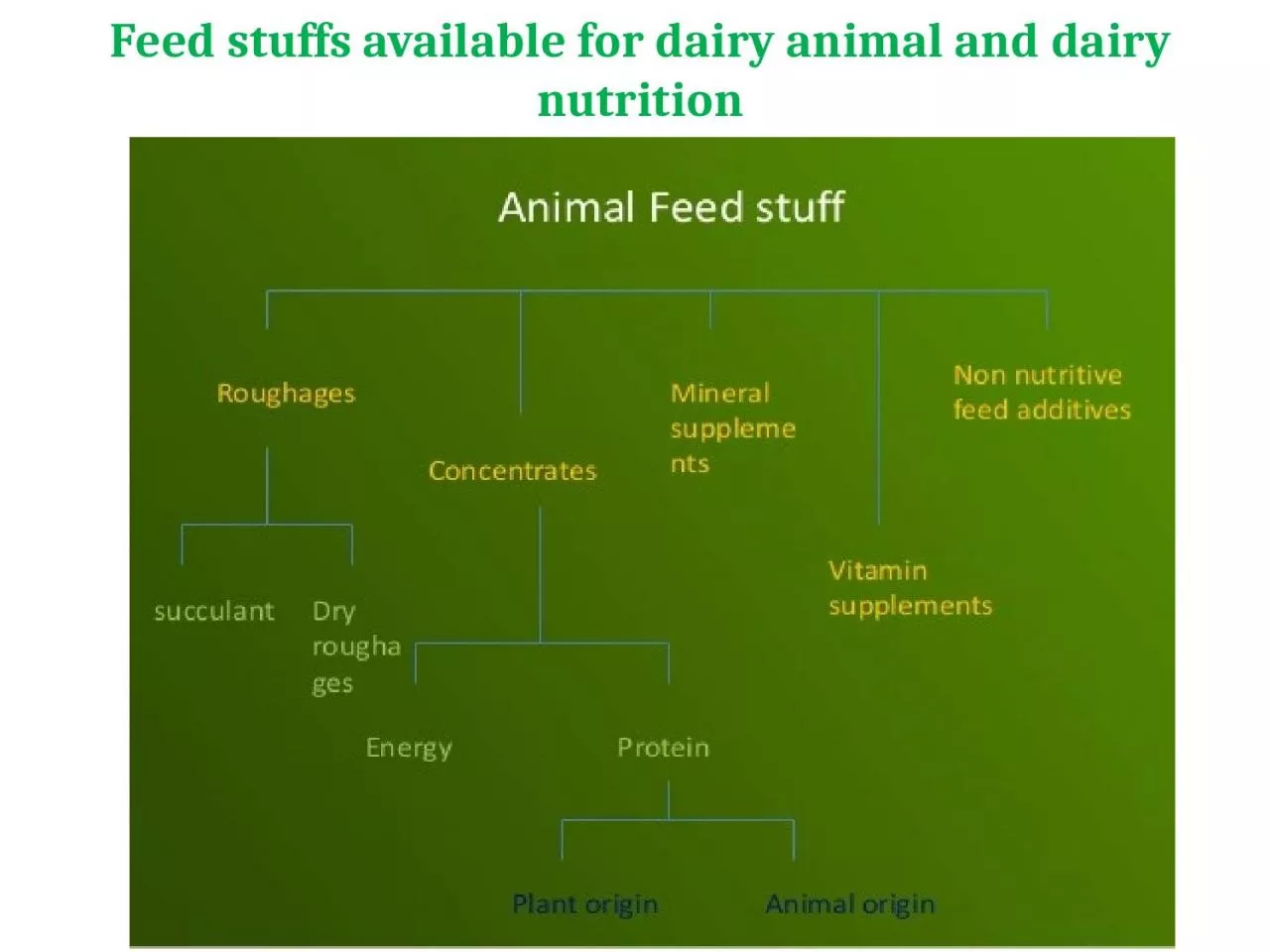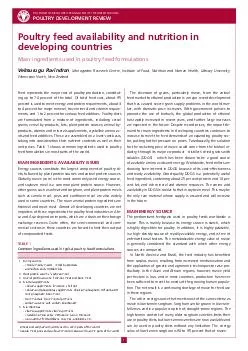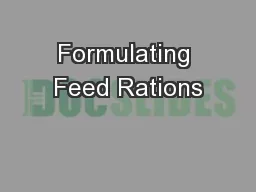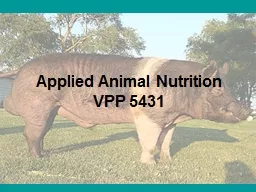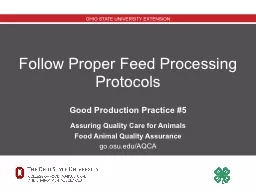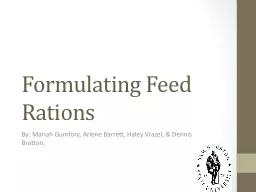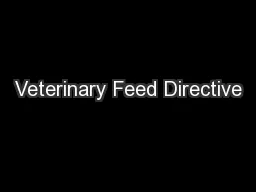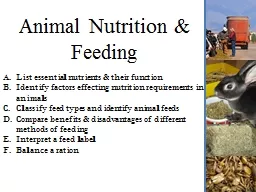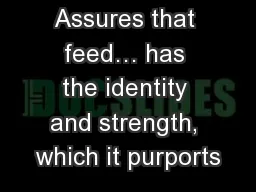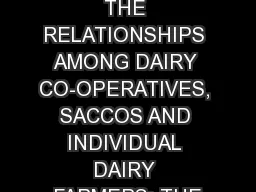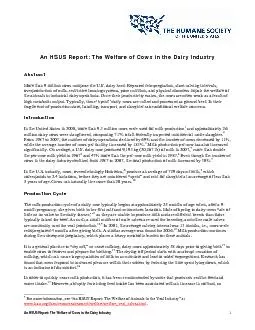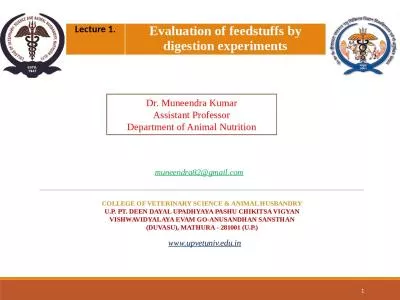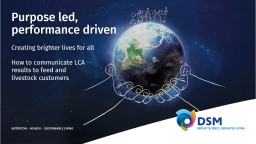PPT-Feed stuffs available for dairy animal and dairy nutrition
Author : FluffyFace | Published Date : 2022-08-02
What is Nutrition Nutrition is the science of dealing with the utilization of food by the body processes which transforms food into body tissues and energy U t
Presentation Embed Code
Download Presentation
Download Presentation The PPT/PDF document "Feed stuffs available for dairy animal a..." is the property of its rightful owner. Permission is granted to download and print the materials on this website for personal, non-commercial use only, and to display it on your personal computer provided you do not modify the materials and that you retain all copyright notices contained in the materials. By downloading content from our website, you accept the terms of this agreement.
Feed stuffs available for dairy animal and dairy nutrition: Transcript
Download Rules Of Document
"Feed stuffs available for dairy animal and dairy nutrition"The content belongs to its owner. You may download and print it for personal use, without modification, and keep all copyright notices. By downloading, you agree to these terms.
Related Documents

